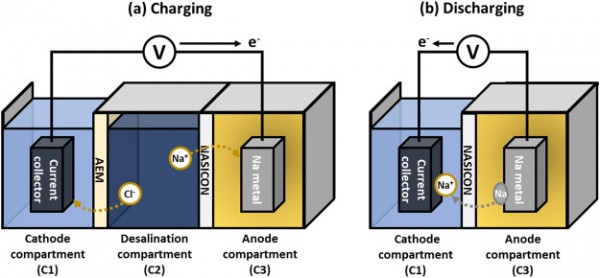Investigating the influence of catholyte salinity on seawater battery desalination
- Journal
- Desalination
- Vol
- 506
- Page
- 115018
- Year
- 2021
The seawater battery (SWB) is a promising desalination technology that utilizes abundant sodium ions as an energy storage medium. Recently, the alternative desalination system, seawater battery desalination (SWB-D), was developed by placing an SWB next to the desalination compartment. This SWB-D system can desalt water while charging the SWB next to it. However, only a fixed catholyte solution has been investigated, although the catholytes impact the overall SWB-D performance. Therefore, we evaluated the effect of different catholytes on the desalination performance. High-saline reverse osmosis (RO) concentrate or brackish water exhibited excellent salt removal capability (>85.3% of sodium and >76.6% of chloride ions) with relatively short operation times (36.4 h for RO concentrate and 39.5 h for brackish water) upon charging, whereas the relatively low-saline river water showed the longest operation time (81.0 h), implying that river water should be excluded as a potential catholyte. The amount of desalinated water was marginally reduced due to osmosis through the anion exchange membrane; however, the amount of treated salt was >82.9% even after the reduction in water volume. These findings suggest that the catholyte with a resistance of >0.041 kΩ·cm can be ideal for the SWB-D.

